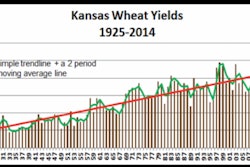
Employers have different views with respect to the Affordable Care Act (ACA), so the old saying “beauty is in the eye of the beholder” seems appropriate. Some will find value in the ACA that they can use to strengthen employee loyalty while maintaining financial performance. However, others will discover that the ACA is simply another government program with an adverse financial impact — an often inescapable reality that can only be mitigated.
Either way, employers have an opportunity to use the additional time created by the one-year delay in the employer shared responsibility (also referred to as the play or pay) mandate to gauge ACA compliance readiness. To that end, employers should consider several potential pitfalls and opportunities to prepare themselves for the ACA’s mandates.
Play or pay mandate
Although the play or pay mandate was delayed until 2015, employers should take advantage of 2014 to evaluate, among other things, the following potential issues:
Applicable large employer status.
For purposes of the ACA, an employer is subject to the play or pay mandate if it employed 50 or more employees on a full-time equivalent basis in the previous year. Although an applicable large employer is not required to offer coverage to its part-time employees, it must consider those employees when determining whether it is an applicable large employer subject to the ACA’s play or pay mandate.
For purposes of the ACA, a full-time employee is any employee who works an average of 30 or more hours/week (or 130 hours/ month). Thus, each employee who works an average of 30 hours/ week (or more) equals one full-time employee. Under the ACA, part-time employees whose combined hours total 120 hours/month are considered one full-time equivalent employee (FTE). So, to determine the number of FTEs represented by part-time (including temporary and seasonal) employees, the part-time employees’ hours are totaled and divided by 120. If the sum of an employer’s full-time employees and FTEs for the previous year equals (or exceeds) 50, then it is an applicable large employer and is subject to the ACA’s play or pay requirements.1
Because an employer’s 2014 workforce will determine whether it is an applicable large employer, it is very important for the employer to determine the size of its workforce as the new year begins. It is important for the employer to record (and maintain records of) each employee’s hours worked and to monitor how any changes in its operations may potentially affect its status as an applicable large employer for purposes of ACA compliance. Accurate time keeping and records are equally important in assessing how the employer’s ongoing hiring during the year may impact its obligations under the ACA. Given the inherently seasonal nature of agribusiness, accurate time keeping records will also be vital to assess how seasonal and temporary employees impact the employer’s status as an applicable large employer under the ACA.
Controlled groups and affiliated service groups are treated as a single employer.
Similar to the rules for tax-qualified retirement plans, common ownership may require two separate companies to be treated as a single employer to determine whether those companies constitute an applicable large employer subject to the play or pay mandate. These rules are complex and beyond the scope of this article. However, if an individual or entity owns interests in two or more companies, it would be wise to consult counsel to determine whether the entities must be considered together in determining applicable large employer status.
Changing employees’ work schedules.
Because the ACA effectively defines full-time status based upon a 30-hour week, many employers have, quite predictably, adjusted hiring patterns and employees’ schedules. Recent news articles recount examples of employers expressly stating that they will reduce hours to avoid offering coverage to employees the employer considers part time.
Although not entirely clear, there may be some risk in reducing an employee’s hours below 30 to avoid offering health plan coverage. Such actions may trigger potential claims of interference with the employee’s benefits under the Employee Retirement Income Security Act of 1974, or whistleblower claims under the ACA. Thus, an employer that plans to reduce employees’ hours or terminate employees to remain below 50 FTEs should be aware that its actions and statements may be cited as the basis for legal action, and should proceed with caution (and consult with counsel) before implementing such changes.
Misclassification of common law employees could increase employer obligations. Many employers retain the services of leased employees for significant periods of time. Similarly, many employers utilize the services of independent contractors. If the employer treats either of these contingent worker groups more like common law employees, it may risk the IRS reclassifying those workers as common law employees. Such reclassifications could easily cause an employer that considers itself a small employer to exceed the 50-employee threshold, which transforms it into an applicable large employer under the ACA. Thus, an employer that never considered itself subject to the ACA’s play or pay mandate may find itself receiving a tax bill from the IRS.
Furthermore, even if the employer determines that it is an applicable large employer under the ACA and offers coverage to 95% of its full-time workforce,2 the exclusion of contingent workers who are later reclassified as common law employees may inadvertently cause the employer’s actual extension of coverage to dip below the 95% threshold. If this were to happen, the employer would be required to pay a monthly penalty of $167 on all full-time employees,3 even those to whom it offered healthcare coverage. To avoid the blunt force of the penalty, an employer using leased employees or independent contractors should carefully evaluate whether those individuals are actually common law employees and if so, how that would affect the employer’s status under the ACA. The employer should also evaluate the potential penalty for failing to offer health coverage to those individuals if their reclassification would make the employer an applicable large employer, or would reduce the percentage of full-time employees to whom the employer offers coverage below 95%.
The cadillac tax
Among the ACA’s revenue-raising provisions is a new, permanent 40% tax on certain group health plans. Effective in 2018, this tax is targeted at health plans characterized by high premiums that are paid mainly by the employer, low (or no) deductibles, and low cost-sharing for the employees’ portion of covered medical expenses. The 40% tax applies to the amount by which the value of the health plan’s coverage exceeds a threshold value of $10,200 (for individual coverage), or $27,500 (for family coverage).
While the threshold will increase based on medical inflation, there is growing concern that the Cadillac tax will eventually impact many health plans not currently considered extraordinarily generous. For that reason, many employers are already planning to adjust their plans’ coverage to avoid triggering this substantial tax. Unions are also threatened by the tremendous sweep of this tax and are lobbying for relief from this penalty, which they anticipate may disproportionately affect their membership’s coverage under their relatively generous health plans.
For an employer obligated by a collective bargaining agreement to provide health coverage to its employees, the Cadillac tax presents a challenge because the agreement may limit the employer’s ability to unilaterally change health coverage.
Clearly, neither the employer nor its union employees will benefit if the employer’s coverage triggers the Cadillac tax penalty. Therefore, it is important for such employers to review exposure to the Cadillac tax now and, if necessary, prepare for the next round of union negotiations to address the value of employees’ health benefits under the collective bargaining agreement. Ideally, the union will simply agree to permit the employer to unilaterally modify health coverage to the extent necessary to avoid the Cadillac tax.
However, because unilateral authority may be difficult for the employer to secure, the employer may also need to consider adding a re-opener clause to the bargaining agreement that provides for the parties to renegotiate health benefits during the term of the agreement to avoid triggering the Cadillac tax.
Summary
Although employers will not face penalties under the play or pay mandate or the Cadillac tax in 2014, they have an opportunity to act now to understand exposure to financial penalties under these ACA requirements. The sooner an employer understands whether and how requirements will apply, the sooner the most reasonable options for compliance can be identified.
- However, if an employer’s workforce equals (or exceeds) 50 employees (including FTEs) for 120 or fewer days during a calendar year solely because of its seasonal workers, it may qualify for an exemption from the ACA’s play or pay requirement.
- 2In general, an applicable large employer must offer affordable, minimum value health plan coverage to at least 95% of its full-time employees to avoid being subject to the employer shared responsibility penalty.
- 3The maximum annual penalty for failing to offer coverage is $2,000 for each full-time employee (working an average of 30 hours per week), but the penalty does not apply to the employer’s first 30 full-time employees.


















